California Lutheran University
|
| |
| Type | Private |
|---|---|
| Established | 1959 |
| Affiliation | Evangelical Lutheran Church in America |
| Endowment | $83.3 million[1] |
| President | Chris Kimball |
Academic staff | 410 (168 full time, 242 part time) |
| Undergraduates | 2,888 |
| Postgraduates | 1,394 |
| Location | Thousand Oaks, CA, USA |
| Campus | Suburban – 290 acres (120 ha) |
| Athletics |
NCAA Division III Southern California Intercollegiate Athletic Conference (SCIAC) |
| Colors | Purple and gold |
| Nickname | Kingsmen (men), Regals (women) |
| Website |
www |
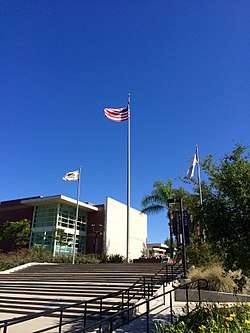
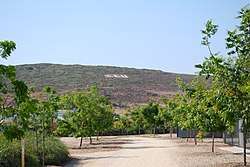
California Lutheran University (also CLU or Cal Lutheran) is a private, liberal arts university located in Thousand Oaks, California. It was founded in 1959 and is affiliated with the Evangelical Lutheran Church in America, but is nonsectarian.[2] Their mission is "to educate leaders for a global society who are strong in character and judgment, confident in their identity and vocation, and committed to service and justice".[3][4] Originally known as California Lutheran College until January 1, 1986,[5] it was the first four-year private college in Ventura County when it opened in 1960.[6][7]
Notable speakers at CLU have been U.S. prseidents Ronald Reagan and Gerald Ford.[8] CLU hosted the preseason training camp for the Dallas Cowboys of the National Football League for 27 years,[9] and serves as the year-round training site for the Los Angeles Rams in 2017-18.[10][11] Numerous films have been shot on campus and in surrounding areas, including Spartacus (1960),[12] Welcome to Hard Times (1967),[13] Wuthering Heights (1939),[14][15] and Gunsmoke (1955-1975).[16]
It is located on a 290-acre campus, 40 miles northwest of Los Angeles. It is a Lutheran institution offering degrees at the bachelor’s, master’s, and doctoral levels, as well as post-master’s and post-bachelor’s certificates.[17] CLU offers 34 majors and 28 minors as of 2002.[7]
The university is based in Thousand Oaks, with additional locations in Woodland Hills (Los Angeles), Westlake Village, Oxnard, Santa Maria, and Berkeley.[18][19]
History
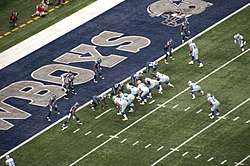
California Lutheran College (CLC) was built in the early 1960s on nearly 300 acres of land in northern Thousand Oaks. Most land had been donated by Richard Pederson, the son of Norwegian immigrants and member of the Norwegian Colony. Pederson donated 130 acres, while more was purchased from other ranchers. The original $2.1 million campus first constructed a swimming pool, and soon also dormitories, administrative offices and classrooms. The college first opened in September 1961. It opened with an enrollment of 330 students, and had reached 1400 students by its first ten years. It became fully accredited within its first year. In 1963, the Community Leaders Club was established in order to bring the town and college closer together. The group conducted annual auctions, staged events, assisted athletic programs, etc. Nearly half of its faculty held doctoral degrees by the early 1970s. The college’s largest gift in school history was received from Clifford- and Alma Pearson, who donated $1 million in 1985 which helped establish the Pearson Library. California Lutheran University remained the only four-year university in Ventura County as of 1989.[20][21]
Notable visitors to CLU events include U.S. presidents Ronald Reagan in 1979 and Gerald Ford in 1981;[8] Bob Hope in 1984; and Nicaraguan president Violeta Barrios de Chamorro in 1991.[22]
Background and origins
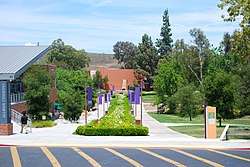
As far back as the turn of the century, when the first Norwegian Lutheran settlers came to the Conejo Valley, they brought the dream of one day establishing a college of their own. Leland Stanford had offered a 50-acre lot near Palo Alto, CA to Swedish Lutherans, but withdrew their offer when asked to fund the construction. In 1928, a group of Los Angeles developers gave a 100-acre site in Del Rey Hills to the Lutheran church. According to a front page article in the Los Angeles Times, the 1929 stock market crash postponed the scheduled construction indefinitely. When World War II ended, the 1944 GI Bill of Rights made it financially possible for over a million veterans to return to college, doubling and even quadrupling the size of some Lutheran colleges in the United States. At the time, California was home to 16 Protestant- and 12 Roman Catholic colleges, however, Lutherans lacked a four-year college in the state.[23][24]
The Committee of Twenty-Five grew out of a meeting convened in North Hollywood on Sept. 13, 1954, led by Dr. Gaylerd Falde, the president of the California District of the Evangelical Lutheran Church (ELC). At the committee’s first meeting was Dr. Orville Dahl, executive secretary of the Board of Higher Education of the ELC, who would later become the creative force behind California Lutheran College. In 1957, a charitable foundation known as the California Lutheran Education Foundation (CLEF) was formed by cooperating Lutheran churches for the purpose of gathering funds for a new college. Dr. Orville Dahl was elected director and Dr. Gaylerd Falde became the chairman of its Board of Governors. Dahl and members of the CLEF visited more than fifty sites in search of a location for the new college.[25]
His last visit took him 45 miles northwest of Los Angeles to the Conejo Valley, where Dahl was offered land by Norwegian farmer Lawrence Pederson. The price tag was however too high, but Richard Pederson approached Dahl the next day handing him the deed to his 130-acre ranch property. In 1957, Dahl became the president of California Lutheran College. Dahl was convinced without a strong church connection, the school would never become reality. He quickly established an outdoor place of worship and also constructed a swimming pool to “entice congregations to come out to the future campus.”[26]
Foundation and early years
California Lutheran College (CLC) opened its doors in the fall of 1961. Church contribution of $400,000 along with individual gifts and loans, had made the completion of a new campus centre possible, which consisted of eight buildings. In addition to those eight, the old Pederson House and chicken coops were remodeled into classrooms and offices. The new college was planted in a fertile setting, rimmed by rolling hills, and home to Kingsmen Creek. Orange- and walnut groves from the old Pederson Ranch were still seen on campus. The college’s formal dedication was held on Reformation Sunday at the end of October, 1961. A highlight of this service was “A Mighty Fortress Is Our God” performed by the newly formed college orchestra and choir. 4,000 Lutherans came to witness the service.[27]
All the first faculty members were of Lutheran faith, often recruited from other Lutheran colleges. There was an understanding during its first two years that only Lutherans should be hired.[27]
The college was accredited by the Western Association of Colleges and Secondary Schools in March 1962. Dahl served as president until 1962, bringing the university's first football coach, Robert Shoup, to the campus in his final year.[28]
The Dallas Cowboys brought their summer training camp to the campus in 1963 and kept it there until 1989.[29][30]
On February 20, 1967, about 200 students instituted a sit-down in front the gymnasium while the chapel was in service to protest things that they believed needed to be changed such as the attendance policy, and operating hours of the library, bookstore, and coffee shop — all of which were closed during chapel services. On April 19, 1968, three hundred Cal Lutheran students commemorated the life of assassinated civil rights activist Martin Luther King Jr. by marching down Moorpark Boulevard in his memory.[22]
Another march was held as part of the National Vietnam War Moratorium Rally. Both marches went from California Lutheran College to downtown Thousand Oaks. President Olson was among those marching with the students and speaking out against the Vietnam War.[31]
In the mid 1960s, the WASC Accrediting Committee had expressed concern over an indebtedness in excess of $1,731,000 and a deficit in current funds of over $350,000. President Dr. Olson inherited the debt, and further deficit budgets during his tenure added to the college’s indebtedness. Donations and grants were insufficient to balance the budget, and the Board of Regents complained they had difficulty getting exact amounts on income versus expenditures. In spite of its economic turmoil, the college grew in number of students, academic reputation, and in number of faculty members. In the fall of 1963, the college had 550 students and in 1964 reached a total of 736 students, originating from 24 U.S. states, Sweden and China. Although Lutherans still made up a majority of 78%, seventeen other denominations were also represented at the college. The percentage of Lutheran faculty and administration workers was 69 percent. From 1963-66, full-time faculty grew from 38 to 69 persons, where Methodists and Presbyterians were the most represented non-Lutheran faculty.[30]
Early finances
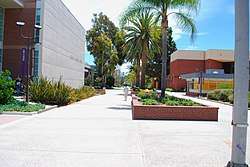
The school’s total debt reached a staggering $3,600,000 in 1970, and the university was facing bankruptcy. Marine Knutson, a Lutheran layman who had experience within crisis management, was hired by the national church as a financial troubleshooter for the college. By applying austere measures that included cutting the facility by seven work positions, Knutson managed to end year 1970 with a $80,000 budget surplus, and was also successful in reducing the debt by $800,000 by the end of the year. National church bodies made a guaranteed commitment for a loan of $1,000,000. Dr. Olson resigned as president in May 1971, after eight years as president during a tenure of financial crisis and social upheaval. However, Dr. Olson had tripled the college’s size, and the school was now home of 1,000 students.[32]
When the search for a new president failed to produce a candidate from outside campus, the Board of Regents was advised by Knutson to appoint Dr. Mark Mathews, the chair of the Business Administration and Economics Department. As Dr. Mathews was a Presbyterian, the institution’s by-laws had to be changed in order to permit him to hold the office. Dr. Mathews became acting college president in 1972. Under his fiscal management, the college reversed the deficit trend and a longer period of financial stability and growth followed his tenure.[32]
New expansion

An increased diversity in religious affiliation took place in the 1970s. In the first year of that decade, Lutherans represented 60% of the faculty, but by the 1978-1979 school year made up only 45% of the faculty. That year, “other Christians” for the first time in school history outnumbered Lutherans. Dr. Mathews resigned as president in 1980, and in 1981 Reverend Jerry Miller, a Harvard University graduate and director of National Lutheran Campus Ministry, became the fourth college president. The fiscal year 1983-1984 recorded grants and donations at $3,250,000, including an individual gift of $1 million, the single largest donation to that date. With the new funds in hand, the school was now able to construct three major buildings: The Pearson Library was erected in 1985, the Ahmanson Science Center in 1988, and the Samuelson Chapel in 1990. The Ahmanson Science Center meant that all sciences for the first time had adequate equipment and space to initiate significant research programs. The new library housed 100,000 books as of 1985.[34][35]
In 1971, the college football team won the NAIA Football National Championship.[32]
Increased diversity
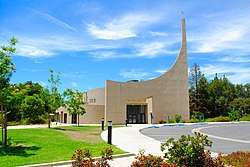
In the early 1980s the college was committed to the establishment of an environment supportive of cultural- and ethnic pluralism. In 1981, the college established four-year working relations with a study group from Japan. With a peak enrollment of 45 Japanese students, the college was further encouraged by WASC in 1983 to be more multiculturally diverse. The college’s report to WASC in 1988 consisted of a revised mission statement which affirmed that the college is welcome to “students of all ages as well as all cultural, religious and ethnic backgrounds.” The school began a determent effort in 1986 based on recruiting international students from Scandinavia, and one year it was seventy international students from Norway attending the college. Furthermore, a grant from the Irvine Foundation helped the college recruit and offer financial aid to minorities. The effort became successful and the college soon attracted a significant Latino-American population from Ventura County. An Office of Multicultural Services was established to facilitate various ethnic organizations and their events.[37]
University status
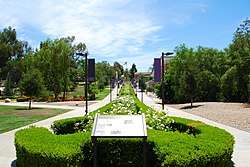
In the fall of 1985, the Board of Regents agreed with the administration that California Lutheran College was ready to receive university status. Not all agreed; those opposing the change felt it could mean sacrificing the CLC’s focus on liberal arts. Some also argued that the college did not have an adequate university library, or that the college in other ways was not ready. Those favoring the change noted that CLC already had graduate programs at the master’s level in five distinct areas, and also noted that despite being the only four-year college in Ventura County, CLC kept being compared to the state’s two-year community colleges. Some were persuaded that turning into a university would force the administrators to take more seriously the scholarly quests for academic excellence. On January 1, 1986, the college became California Lutheran University (CLU).[38]
Modern history
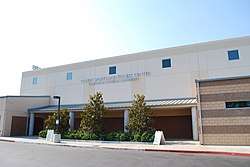
In 1994, KCLU-FM, a non-commercial public radio station, was established and housed on the Cal Lutheran campus.[41][42]
After the Samuelson Aquatic Center was completed in 2007, it served as the official training site of the 2008 and 2012 US Olympic Men's Water Polo teams.[43]
Beginning in 2016, the school is hosting the temporary headquarters and regular season training facilities of the Los Angeles Rams of the NFL.[11][44]
Rankings
In 2012, CLU was ranked number 14 among regional universities in the Western United States by U.S. News & World Report,[45] a ranking maintained as of 2017.[46] The same rating, U.S. News & World Report published by America’s Best Colleges Guide, has rated CLU among the top 25 universities in Western United States for over ten consecutive years.[7] Forbes ranked CLU number 276 out of 650 "Top Colleges" in the U.S.[47] The company Niche ranked CLU 47th among the "Best Christian Colleges in America" in 2017, and 78th in "Best College Dorms in America". It also ranked the campus as the 101th best college campus in the U.S.[48] The university also appeared in the 2015 "America's Top Colleges" by Forbes[49] and Time Magazine's "Best Colleges For Your Money 2017".[50]
The student-faculty ratio is 15:1,[51][3] and 98.4% of its classes have 49 students or fewer.[46] 86 percent of its full-time faculty (118 persons) hold PhDs.[52]
Accreditations and affiliations
CLU is accredited by the Accrediting Commission for Senior Colleges and Universities, a commission of the Western Association of Schools and Colleges (WASC). It is also accredited by the California Commission on Teacher Credentialing (CCTC) and the National Council for Accreditation of Teacher Education (NCATE).[19] The Financial Planning Program has been registered with the Certified Financial Planner Board of Standards Inc. The Doctorate Program in Clinical Psychology, within the Graduate School of Psychology, is accredited by the American Psychological Association.[53]
CLU is one of 28 colleges and universities affiliated with the Evangelical Lutheran Church in America and is a member of the National Association of Independent Colleges and Universities, Association of Independent California Colleges and Universities, and Council of Independent Colleges. CLU's intercollegiate athletic programs compete in the Southern California Intercollegiate Athletic Conference and in NCAA Division III.[53][3]
Campus
The 290-acre (120 ha)[54] main campus is located in Thousand Oaks, a city in southern Ventura County, California, comprising 41 buildings, four fields, two stadiums, two swimming pools, a tennis court, botanic gardens, as well as undeveloped chaparral hillsides.
The university has a 96,000-square-foot athletics complex, the Gilbert Sports and Fitness Center. Adjacent to the complex is the 50-meter Samuelson Aquatic Center and a 4,800-square foot community pool.[55]
Campus layout
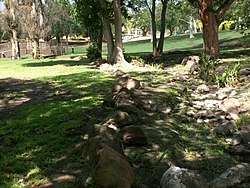
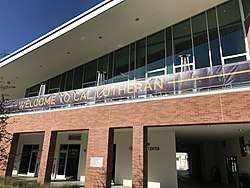
The campus of CLU is primarily organized by the four cardinal directions, with the north side, located across Olsen Road and backed up against Mt. Clef Ridge, serving as the primary center for athletics. Some North Campus facilities include Gilbert Sports and Fitness Center, Samuelson Aquatic Center, Ullman Baseball Stadium and George Sparky Anderson Baseball Field, Hutton Softball Field, William Rolland Stadium (opened Fall 2011), Facilities Building and Yard, and a community pool for the City of Thousand Oaks.
The east side is the primary location for freshman residence halls and some administrative offices. Some east side facilities include Mt. Clef Residence Hall, Thompson Residence Hall, Pederson Residence Hall, Student Union, Alumni Hall, Centrum Café, Hanson Business Center, and Pederson Administration Building.
The south side, also known as the Academic Core, is the primary location for the academic buildings on campus. Southside facilities include Soiland Humanities Building, Ahmanson Science Center, Spies-Bornemann Center for Education and Technology, Nygreen Hall, Peters Hall (School of Business), and Swenson Center for the Social and Behavioral Sciences (opened Fall 2010). A Jamba Juice location is also situated on the south side of the CLU campus.
The west side contains upperclassman housing. West side facilities include Grace Hall Apartments, Mogen Hall Apartments (with the Mogen Market facility), Old West Complex (Afton, Janss, Rasmussen, and Conejo residence halls), New West Complex (North, South, West and Potenberg residence halls), and Trinity Hall (completed in 2009).
The center of the campus primarily features the Pearson Library as well as the Ullman Commons. Pearson Library holds 132,744 titles and 1,497 serial subscriptions.[57]
The former chicken coops of the Pederson Ranch were converted into classrooms by Jefferson A. Elmendorf, the same architect who worked with Dr. Dahl in planning the campus, and designed The Centrum and other campus buildings.
CLU's first LEED Certified building, the Swenson Center for the Social and Behavioral Sciences, opened in Fall 2010.[58]
50th anniversary
The 2009–2010 academic year at CLU represented the school's 50th anniversary as an established university. New facilities include a new building for the KCLU-FM radio station and an Early Childhood Center, located on the North Campus. Trinity Hall, a new 220-bed residence hall, is located on the west side of campus near all the other upperclassmen residence halls. Also in honor of the anniversary, the Enormous Luther statue was painted gold.[59]
Landmarks
- The Enormous Luther, 5,000 pound bronze statue at Falde Plaza immediately in front of Pearson Library, known as The Enormous Luther (“Gumby”), which is an abstract of Martin Luther. It is a 25-feet tall and has a 12-feet wide cast. It was a gift of the first graduating class at California Lutheran College in 1964, and is the work of a renowned art professor emeritus, Sir Bernardus Weber. It has become an unofficial mascot of the university.[61][62][63]
- Pederson House and Water Tower is located on the corner of Regent Ave. and Faculty St. on the university campus. Originally built by Norwegian settlers who first arrived here in year 1890, the 1913 house is Ventura County Historic Landmark No. 45 and City of Thousand Oaks Historical Landmark No. 3. It was originally located at the present location of Ahmanson Science Center, where a statue has been erected in honor of Lars Pederson. The structure was later relocated 500 ft. to its current location.[64][65][66][67]
- Samuelson Chapel is a towering cross-topped landmark, which was established in 1990. The chapel has stained glass windows and a 39-rank, racker-action pipe organ.[68]
Kwan Fong Gallery of Art and Culture
The Kwan Fong Gallery in the Soiland Humanities Center was established by the Kwan Fong Charitable Foundation, co-founded by Maria Lee and Katie Yang, with the participation of Dr. Ed Tseng, Professor Emeritus of Political Science of California Lutheran University and Dean of International Education. The foundation, which supported hospitals, schools, and homes for the elderly and mentally challenged, dissolved in 2006.[69]
Since its establishment, the gallery has exhibited works by Jeremy Lipking, Dan Welden, Teresa Oaxaca, Tony Pro, Alexey Steele, Cyn McCurry, Gary Palmer, Christophe Cassidy, Morgan Alexander, and Christopher Marshall, among others. The gallery has residencies by artists, the first in 2007 by Dallas-Fort Worth-based figurative painter Cyn McCurry.[70]
The William Rolland Gallery of Fine Art
The William Rolland Gallery of Fine Art was established by philanthropist William Rolland on the university's campus in 2011. The gallery provides free public programming including lectures, foreign language tours, and concerts, serving Ventura, Los Angeles, and Santa Barbara counties. Exhibitions rotate approximately five times per year and have featured works from artists such as Andy Warhol, Chuck Close, David Hockney, Fernando Botero, and Picasso.[71][72]
The Barbara Collins Arboretum
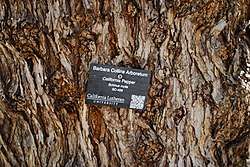
The grounds of the campus is dubbed the Barbara Collins Arboretum. Named after Barbara Collins, who taught microbiology and botany at CLU for 50 years, the arboretum selected and cataloged much of the campus flora. Many of the trees flank a natural creek that bisects the campus. Many native species to Southern California can be found on campus, including Campus Gardens, Garden flowers, Canadian flowers, and California wildflowers.[73] The arboretum opened in 2007 and Collins collected[74] or identified[75] over 100 species for the arboretum.
Academics
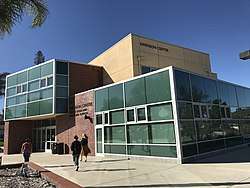
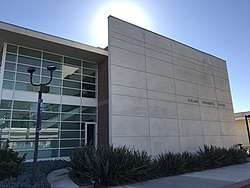
California Lutheran University has five academic divisions:
- College of Arts and Sciences
- School of Management
- Graduate School of Education
- Graduate School of Psychology
- Adult Evening program
Across all divisions, class sizes are kept small — 16 students on average.[76] CLU offers undergraduate students either a Bachelor of Arts or a Bachelor of Science degree, depending on their field of study, in 36 academic majors and 36 minors, with the ability to double-major.[51] There are 30 graduate programs offering credentials, certifications, and doctorate degrees.[77]
College of Arts and Sciences
The Dean of the College of Arts and Sciences is Dr. Jessica Lavariega Monforti.[78] A vast majority of the school's academic departments are in the College of Arts and Sciences, with 33 majors.[79]
Graduate programs
For graduate students, the College of Arts and Sciences contains master's degree programs in psychology, computer science, clinical psychology, counseling psychology (MFT), and public policy and administration. Some undergraduate students who intend to enter one of these programs upon completion of their undergraduate studies can choose to enroll in some graduate courses as an undergraduate, and obtain graduate-level course credits.
School of Management
Containing all of CLU's business-related programs, the California Lutheran University School of Management employs many professors who have earned respect in their chosen fields prior to becoming professors. In addition, some professors have come from senior executive backgrounds and offer real-world experiences. The School of Management is based in Peters Hall. Students in the School of Management can major in Business Administration, Economics, or Accounting. The dean of the School of Management is Dr. Gerhard Apfelthaler.[80]
Graduate programs in the School of Management
The School of Management at CLU offers a range of graduate programs. The School of Management also offers a variety of certificate programs. All programs are accredited by WASC.[81] Many foreign students come to CLU take the graduate IMBA Program. California Lutheran University School of Management's MBA program was ranked 66th in North America by The 2010 QS World University Rankings.[82]
Graduate School of Education
California Lutheran University's School of Education trains teachers at the elementary, secondary, and post-secondary levels of instruction. It is based out of the Spies-Bornemann Center for Education and Technology in the Academic Quarter. While primarily a graduate school, CLU undergraduate students can major in Liberal Studies, which qualifies them to teach elementary school and prepares them for the multiple-subject examinations (the CBEST and CSET) required by the State of California. While in this major, students take a Career Decisions in Education course that expose them to various facets of the education world, and allows them to participate in field studies at local elementary schools. The School of Education is headed by its dean, Dr. Michael R. Hillis.[83]
There are multiple master's degree programs within the School of Education, as well as the Teacher Preparation program for California teachers. Students are able to obtain a teaching credential while at the same time earning credit toward their Master of Education (M.Ed) degree. In addition to the Teacher Preparation program, students can obtain a Master of Science in Counseling and Guidance or Educational Psychology, and a Master of Arts in a wide variety of education-related administrative career fields, including Educational Technology, Educational Leadership, or School Site Leadership. Graduate students can also obtain a Doctor of Education (Ed.D) degree in Educational Leadership from the School of Education. This program requires extensive field work and a dissertation defense.
Graduate School of Psychology
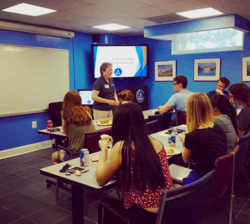
The Graduate School of Psychology has three academic programs and two counseling centers. The school offers an APA-accredited doctorate in clinical psychology (Psy.D)[84] and master of science degrees in clinical psychology[85] and counseling psychology (MFT).[86] The counseling centers provide low-fee services to residents of Ventura and Los Angeles counties and are located in Oxnard and Westlake Village. Graduate students provide the clinical services at the counseling centers and are overseen by 21 licensed supervisors.[87] Dr. Rick Holigrocki is the founding dean of the school.
Bachelor's Degree for Professionals
Formally named the Adult Degree Evening Program (ADEP), the Bachelor's Degree for Professionals is aimed at working professionals who want to earn a bachelor's degree in a compressed timeline. Courses are offered in the evenings at the main Thousand Oaks campus as well as at satellite campuses in Woodland Hills and Oxnard.[88]
Special programs
Special academic programs include an honors program, cooperative (work-study) education, accelerated degree programs, study abroad, advanced placement credit, self-designed majors, part-time degrees, adult education programs, internships, weekend programs, summer sessions, independent studies, double majors, and more. The university has an arrangement for off-campus studies at Wagner College, American University ("Washington, D.C. Semester").[57]
Residence life
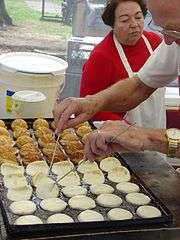
California Lutheran University maintains a policy of guaranteeing on-campus housing for all four years if students elect to do so. On-campus housing or living at home is required for freshmen and sophomores; however, juniors and seniors may elect to live off-campus with friends.[89] 63% of the student body reside on campus as of 2011, while 88% of all freshmen students reside on campus.[3]
Upperclassmen housing
Once students move on to their sophomore, junior and senior years at CLU, they are allowed to choose which residence hall to live in on the west side of campus. This area contains the New West Complex (comprising four buildings: North, South, West, and Potenberg halls), the Old West Complex (comprising four buildings: Afton, Janss, Rasmussen, and Conejo halls), the Mogen Hall Apartments, Grace Hall, and Trinity Hall. Traditionally, New West attracts much of the sophomore student body, Old West the juniors, and Mogen and Grace the seniors. However, in recent years there has been a virtual complete mixing of sophomores, juniors and seniors all throughout Old West, New West, Mogen, Grace, and Trinity.
Special housing options and graduate housing
Kramer Court is a special housing option for undergraduate students. It is located on the east side of campus and each unit comes fully furnished with a living room, two bedrooms, a backyard, and many other features not common to other on-campus housing. These units are application-based and are usually occupied by juniors and seniors.[90] The third floor of Grace Hall has been converted to graduate student housing.
Student body
The CLU student body consists of approximately 3,499 students as of 2009, originating from 43 U.S. states and territories, and 47 countries. 80 percent were from California, and 56 percent of students were female.[57] As of 2011, 60% the student body were Caucasian-American, 16.4% Hispanic-American, 5.5% Asian-American, 3.6% African-American, and 0.9% Native-American. 6.7 percent of the student body were international students. 62% of students were female, while 38% were male.[3]
The average class size is 16 students.[91] The university has 75 registered organizations, 11 honor societies, and 3 religious organizations.[92] Student clubs include Asian Club and Friends, Brothers & Sisters United, Latin American Student Organization, United Students of the World, Chinese Students Association, among others.[3]
It is located in an area with a conservative political nature. A large number of students have organized a Republican Club which has gained national prominence by having “the highest ratio of club members to number of students of any College Republican club in California.” Some of their 1997 missions included adding an American flag to every classroom and having Christian prayers at student senate meetings.[93]
The freshman retention rate was 80% as of 2011.[3] 65 percent of graduates go on to further study within 1 year of graduation. 78 percent of freshmen return for sophomore year.[94]
Admission
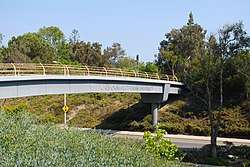

The university has an admission rate of 62 percent (2010). Enrolled students had a SAT Critical Reading range of 490-580, SAT Math range og 510-610, and a SAT Writing range of 490-590. The average high school GPA was 3.8.[3] For admission, the university requires an interview, essay, previous school transcripts, GPA and SAT or ACT scores, as well as TOEFL scores for international students.[57]
ASCLU-G Student Government
As of the 2009–2010 academic year, the student government of California Lutheran University is divided into three branches, each possessing different responsibilities. The ASCLU-G (Associated Students of California Lutheran University Government) comprises the Senate, Programs Board, and Executive Cabinet. For Senate and Programs Board, there are four elected positions available per class level as well as a transfer student, recorder, and commuter student position. The Executive Cabinet is made up largely of students who have served on ASCLU-G for one or more years, and contains the offices of the ASCLU President, Programs Board Director, Senate Director, Executive Recorder, and ASCLU Controller. Meetings are held Monday nights, and the entire student body is welcome to attend. Elections are held in the spring semester for all positions for the next academic year and in the fall semester to elect the four freshmen positions and any unfilled spots from the spring election.[95]
Senate
The ASCLU Senate is primarily responsible for the financial needs of the students. Some of their duties include (but are not limited to): approving and allocating funds to new campus clubs, purchasing equipment for residence halls, and discussing and/or changing campus dining policies. The Senate is usually divided into three or four committees, headed by a committee chair (who has usually served on Senate for one or more years), and each has a specific jurisdiction regarding campus policies.[96]
Programs Board
The ASCLU-G Programs Board is primarily responsible for planning, organizing, financing, and running many of the on- and off-campus events that go on throughout each academic year. The principal event that Programs Board is responsible for is known as "Club Lu", a free event for traditional undergraduate students every Friday night. Each Club Lu event is different; previous events include rollerskating, on-campus dances, ice skating, bowling, movie nights, the Homecoming carnival, Christmas festivals, and talent shows. Programs Board is also responsible for planning larger off-campus events such as the Homecoming Dance and Spring Formal. Like Senate, Programs Board is divided into three or four committees, each headed by a committee chair (who has usually served on Programs Board for one or more years), and each is assigned specific events to plan throughout the academic year.[97]
Norwegian roots
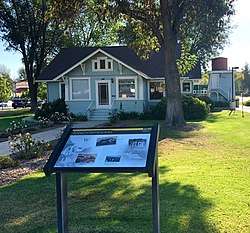
California Lutheran University is located on land which was donated from the Norwegian Colony.[98][99] The road which it is located on, Olsen Road, is named for Norwegian pioneer Nils Olsen of the Norwegian Colony.[100]
The university's ties to Norway and remain strong. In 2017, twenty percent of the international undergraduate students were from Norway.[101] The Scandinavian influence can continue to be seen in the spring Scandinavian Cultural Festival and in the names of buildings on campus and local streets, many named for prominent Norwegians who helped establish CLU. An example is Lars Pederson's original home which has been relocated to Faculty Street on campus. It is known as Pederson House and Water Tower and is designated Ventura County Historical Landmark number 45 and Thousand Oaks Historical Landmark number 3.[100][102] The Pederson (Pedersen) family, who donated the farmland in Thousand Oaks, were among many Scandinavian immigrants populating the hills of Thousand Oaks.
Student research and publications
CLU houses two annual undergraduate research events: the Festival of Scholars and the Student Research Symposium.[103]
University Press
California Lutheran College University Press has published books such as California Lutheran College: The First Quarter Century (1984), The Temescals of Arroyo Conejo (1982), Voyages (1977), Hiking In Wildwood Regional Park: Natural History, Folklore, and Trail Guide (2000), and several books by Barbara J. Collins.
Athletics
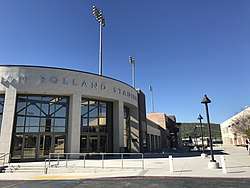
The university's intercollegiate athletic teams are competing in the Southern California Intercollegiate Athletic Conference (SCIAC) and the NCAA at the Division III. Women’s and men’s teams compete in football, basketball, baseball, tennis, soccer, and track and field. Since 1991, the university has won 26 SCIAC championships, averaging more than five per season.[105] As a Division III member, the university does not offer athletic scholarships.
The following sports are offered for NCAA-sanctioned intercollegiate competition:[106]
- Men's teams: Baseball, basketball, diving, football, cross-country, golf, track/field, and water polo.
- Women's teams: Basketball, cheerleading, cross-country, diving, soccer, softball, swimming, tennis, track/field, volleyball, and water polo.
Kingsmen football
Robert Shoup led the Kingsmen to 13 NAIA District 3 Championships and the 5 playoffs in his 17 years as coach. He was named NAIA Coach of the Year in 1971, the same year they won the NAIA National Championship.
The team won the NAIA Football National Championship for the first time in 1971.[107] In recent years, it won the championship in 2007, 2009 and 2010. Running back Brian Stuart of CLU received the Player of the Year award in 2009.[108]
Kingsmen baseball
On May 30, 2017, the Kingsmen won their first NCAA Division III baseball title under coach Marty Slimak.[109][110][111]
Regals volleyball
In 2015, Regals volleyball won the national championship in NCAA Division III women’s volleyball. They were led by head coach Kellee Roesel.[112][113] The team was ranked number two in the nation as of 2016.[114]
Student media
The Echo is the student news outlet. It has received numerous awards, including a first place in the 2018 California College Media Association Award for Excellence in Student Media.[115][116]
KCLU-FM

KCLU-FM is a non-commercial radio station located on the campus of California Lutheran University. The National Public Radio-member station serves Ventura County, California at a radio frequency of 88.3 MHz and Santa Barbara at a frequency of 102.3 MHz.[35]
The Thousand Oaks City Council approved a special use permit in 1993 which allowed California Lutheran University to construct a radio tower and FM antenna.[118]
Recreation
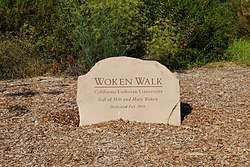
The northern section of the university campus contains trail access to Mount Clef Ridge Trail in Mount Clef Open Space. This trail later becomes Santa Rosa Trail, which enters Wildwood Regional Park and follows Mount Clef Ridge. Wildflower Butte Trail is another hiking trail which connects to Wildwood, with a trailhead from the parking area on Campus Drive, north of Olsen Road. This is an ancient Chumash trail which connects to Chumash sites such as Ven-37, Ven-6, and former Chumash village sites within Wildwood.[119][120][121] Mount Clef Ridge Open Space, which borderers the university on the north, totals 217 acres and supports fauna such as coyote, deer, and gray fox.[122]
University presidents
- Orville Dahl, Ed.D., 1959–1962
- Raymond Olson, D.D., 1963–1971
- Mark Mathews, D.B.A., 1972–1980
- Jerry Miller, D.D., 1981–1992
- Luther S. Luedtke, Ph.D., 1992–2006
- John R. Sladek, Ph.D., 2006–2007
- Chris Kimball, Ph.D., 2008–present
Notable alumni

- Hank Bauer – retired special teams player San Diego Chargers, 1977–82[123]
- Derrick Clark – head basketball coach at Metro State University[124]
- Jason Dolley – actor
- Jacquelynne Fontaine – 2006 Miss California[125]
- Kevin Gross – retired Major League Baseball All-Star pitcher[126]
- Tom Herman – football head coach at University of Texas
- Rich Hill – former head baseball coach at CLU; current head baseball coach at San Diego
- Jason Hirsh – Major League Baseball pitcher[127]
- Brian Kelley – retired linebacker New York Giants, 1973–83[128]
- Rod Marinelli – former head coach of the Detroit Lions, 2006–2008
- Bianca Santos – actor
- James Ware – retired federal judge of the U.S. District Court for the Northern District of California
- Moe Set Wine – Miss Universe Myanmar 2013
References
- ↑ "U.S. and Canadian Institutions Listed by Fiscal Year (FY) 2014 Endowment Market Value and Change* in Endowment Market Value from FY2013 to FY2014" (PDF). National Association of College and University Business Officers (NACUBO). February 2015.
- ↑ "The Lutheran Education Experience". California Lutheran University.
- 1 2 3 4 5 6 7 8 Rubinoff, Matt and Joseph Tavares (2010). 2011 College Access and Opportunity Guide. Center for Student Opportunity. Sourcebooks, Inc. Page 141. ISBN 9781402244056.
- ↑ "Mission and Student Learning Outcomes". California Lutheran University. Retrieved July 22, 2013.
California Lutheran University offers undergraduate program offers 36 majors, 34 minors, and 7 pre-professional programs. Additionally, the accelerated Bachelor's Degree for Professionals is designed to meet the needs of part-time returning adult students. Regarded graduate programs include post-graduate degrees in business, computer science, education, psychology, and public policy and administration, with doctorates in educational leadership, higher education leadership, and clinical psychology. It also offers post-graduate credentials and certifications.
- ↑ "History". California Lutheran University.
- ↑ Triem, Judith P. (1990). Ventura County: Land of Good Fortune. EZ Nature Books. p. 139. ISBN 9780945092162.
- 1 2 3 Baker, Pam (2002). Thousand Oaks Westlake Village: A Contemporary Portrait. Community Communications, Inc. Page 46. ISBN 978-1581920611.
- 1 2 Bidwell, Carol A. (1989). The Conejo Valley: Old and New Frontiers. Windsor Publications. p. 68. ISBN 9780897812993. .
- ↑ Ortega, John (December 7, 1989). "CLU Searching for New NFL Tenant". Los Angeles Times.
- ↑ "Rams players and families are calling Conejo Valley home". Ventura County Star.
- 1 2 3 "L.A. Rams training moving to Cal Lutheran". Los Angeles Rams.
- ↑ "Living in one of Hollywood's best-kept secrets". The Echo. California Litheran University. November 8, 2012.
- ↑ Bidwell, Carol A. (1989). The Conejo Valley: Old and New Frontiers. Windsor Publications. p. 112. ISBN 9780897812993. .
- ↑ O’Brien, Tricia (2017). Thousand Oaks and Westlake Village. Arcadia Publishing. p. 24. ISBN 9781439661956.
- ↑ Fleming, E.J. (2010). The Movieland Directory: Nearly 30,000 Addresses of Celebrity Homes, Film Locations and Historical Sites in the Los Angeles Area, 1900–Present. McFarland. p. 48. ISBN 9781476604329.
- ↑ "Locally filmed Westerns 'Butch Cassidy,' 'Gunsmoke' part of Conejo film fest". Ventura County Star.
- ↑ Clemente, Stephen (2009). Peterson's Colleges in the West. Peterson’s. Page 52. ISBN 9780768926965.
- ↑ "VCCCD and California Lutheran University Establish Transfer Admission Guarantee Agreement - Ventura County Community College District". www.vcccd.edu.
- 1 2 Oram, Fern A. (2006). MBA Programs 2007 (Peterson's MBA Programs). Peterson’s. Page 62. ISBN 978-0768921618.
- ↑ Bidwell, Carol A. (1989). The Conejo Valley: Old and New Frontiers. Windsor Publications. Pages 67-68. ISBN 9780897812993.
- ↑ Conejo Valley Chamber of Commerce (1973). Conejo Valley: Thousand Oaks, California. Thousand Oaks, CA: Conejo Valley Chamber of Commerce. Page 5.
- 1 2 "Our History". California Lutheran University. Retrieved March 7, 2016.
- ↑ Hughes, Richard Thomas and William B. Adrian (1997). Models for Christian Higher Education: Strategies for Survival and Success in the Twenty-first Century. Wm. B. Eerdmans Publishing. Pages 98-99. ISBN 9780802841216.
- ↑ Baker, Pam (2002). Thousand Oaks Westlake Village: A Contemporary Portrait. Community Communications, Inc. Page 90. ISBN 978-1581920611.
- ↑ Hughes, Richard Thomas and William B. Adrian (1997). Models for Christian Higher Education: Strategies for Survival and Success in the Twenty-first Century. Wm. B. Eerdmans Publishing. Pages 99-100. ISBN 9780802841216.
- ↑ Hughes, Richard Thomas and William B. Adrian (1997). Models for Christian Higher Education: Strategies for Survival and Success in the Twenty-first Century. Wm. B. Eerdmans Publishing. Page 100. ISBN 9780802841216.
- 1 2 Hughes, Richard Thomas and William B. Adrian (1997). Models for Christian Higher Education: Strategies for Survival and Success in the Twenty-first Century. Wm. B. Eerdmans Publishing. Page 101. ISBN 9780802841216.
- ↑ "Founding father of CLU football is being recognized". The Echo. California Lutheran University. October 8, 2014.
- ↑ https://www.callutheran.edu/news/story.html?id=12331#story
- 1 2 Hughes, Richard Thomas and William B. Adrian (1997). Models for Christian Higher Education: Strategies for Survival and Success in the Twenty-first Century. Wm. B. Eerdmans Publishing. Page 106. ISBN 9780802841216.
- ↑ Hughes, Richard Thomas and William B. Adrian (1997). Models for Christian Higher Education: Strategies for Survival and Success in the Twenty-first Century. Wm. B. Eerdmans Publishing. Pages 104-105. ISBN 9780802841216.
- 1 2 3 Hughes, Richard Thomas and William B. Adrian (1997). Models for Christian Higher Education: Strategies for Survival and Success in the Twenty-first Century. Wm. B. Eerdmans Publishing. Page 107. ISBN 9780802841216.
- 1 2 Clemente, Stephen (2009). Peterson's Colleges in the West. Peterson’s. Page 52. ISBN 9780768926965.
- ↑ Hughes, Richard Thomas and William B. Adrian (1997). Models for Christian Higher Education: Strategies for Survival and Success in the Twenty-first Century. Wm. B. Eerdmans Publishing. Pages 111-112. ISBN 9780802841216.
- 1 2 Baker, Pam (2002). Thousand Oaks Westlake Village: A Contemporary Portrait. Community Communications, Inc. Page 91. ISBN 978-1581920611.
- ↑ http://articles.latimes.com/1991-06-27/news/vl-1944_1_campus-building
- ↑ Hughes, Richard Thomas and William B. Adrian (1997). Models for Christian Higher Education: Strategies for Survival and Success in the Twenty-first Century. Wm. B. Eerdmans Publishing. Page 113. ISBN 9780802841216.
- ↑ Hughes, Richard Thomas and William B. Adrian (1997). Models for Christian Higher Education: Strategies for Survival and Success in the Twenty-first Century. Wm. B. Eerdmans Publishing. Page 114. ISBN 9780802841216.
- ↑ http://archive.vcstar.com/sports/clu-wants-to-host-rams-for-training-camp-2951de10-f201-42dc-e053-0100007f1193-365327211.html/
- ↑ https://www.toacorn.com/articles/former-usc-star-miller-to-speak-at-dedication-of-gilbert-sports-and-fitness-center/
- ↑ Pols, Mary F. (October 20, 1994). "Working Out the Last-Minute Bugs". Los Angeles Times. Retrieved June 28, 2018.
- ↑ "History". KCLU.org.
- ↑ "U.S. Men's Olympic Water Polo Team Wrapping Up Training in Ventura County For 2012 Summer Games In London". KCLU.org. July 2, 2012b.
- ↑ "Rams to practice at Cal Lutheran University in Thousand Oaks". Pacific Coast Business Times. March 30, 2016. Retrieved April 5, 2016.
- ↑ "CLU earns highest-ever U.S. News ranking". California Lutheran University.
- 1 2 "California Lutheran University". U.S. News & World Report. Retrieved October 4, 2017.
- ↑ "California Lutheran University". Forbes. Retrieved April 21, 2015.
- ↑ "2018 California Lutheran University Rankings". Niche.
- ↑ "Cal Lutheran ranked among Best Colleges". California Lutheran University.
- ↑ "California Lutheran University is #597 on MONEY's 2017-18 #BestColleges List". Time.
- 1 2 "California Lutheran University".
- ↑ Franek, Robert and Laura Braswell (2009). Complete Book of Colleges. The Princeton Review Firm. Page 133. ISBN 9780375429408.
- 1 2 "Cal Lutheran at a Glance". California Lutheran University.
- ↑ Franek, Robert and Laura Braswell (2009). Complete Book of Colleges. The Princeton Review Firm. Page 133. ISBN 9780375429408.
- ↑ "Conejo Recreation and Park District - Aquatics". Conejo Recreation and Park District.
- ↑ University, California Lutheran. "Venue Detail". Cal Lutheran.
- 1 2 3 4 Clemente, Stephen (2009). Peterson's Colleges in the West. Peterson’s. Page 52. ISBN 9780768926965.
- ↑ "CLU building is LEED Silver certified". California Lutheran University.
- ↑ "In the Middle of Things". CalLuMag. Spring–Summer 2015. p. 13.
- ↑ Bidwell, Carol A. (1989). The Conejo Valley: Old and New Frontiers. Windsor Publications. Page 96. ISBN 9780897812993.
- ↑ "CLU's golden giant - The Echo". 30 April 2014.
- ↑ Hughes, Richard Thomas and William B. Adrian (1997). Models for Christian Higher Education: Strategies for Survival and Success in the Twenty-first Century. Wm. B. Eerdmans Publishing. Pages 97-98. ISBN 9780802841216.
- ↑ Bidwell, Carol A. (1989). The Conejo Valley: Old and New Frontiers. Windsor Publications. Page 96. ISBN 9780897812993.
- ↑ BUSTILLO, MIGUEL (20 October 1997). "Council to Consider Naming Landmarks" – via LA Times.
- ↑ Begun, Miriam; Sprankling, Ruthanne (2009). Ladies of The Conejo. Newbury Park, CA: Conejo Valley Historical Society. p. 134. ISBN 9780972523356.
- ↑ Sprankling, Miriam; Begun, Ruthanne (2006). Historical Tour of the Conejo Valley. Newbury Park, CA: Conejo Valley Historical Society. p. 16. ISBN 0-9725233-4-0.
- ↑ Sprankling, Miriam (2002). Discovering the Story of the Conejo Valley. Newbury Park, CA: Conejo Valley Historical Society. p. 50. ISBN 0-9725233-0-8.
- ↑ Hughes, Richard Thomas and William B. Adrian (1997). Models for Christian Higher Education: Strategies for Survival and Success in the Twenty-first Century. Wm. B. Eerdmans Publishing. Page 112. ISBN 9780802841216.
- ↑ Kwan Fong Charitable Foundation Limited
- ↑ "For Texas painter, home for now is CLU". California Lutheran University.
- ↑ "About the Gallery - William Rolland Gallery of Fine Art". William Rolland Gallery of Fine Art. California Lutheran University.
- ↑ "William Rolland Gallery of Fine Art at Cal Lutheran Thousand Oaks".
- ↑ "Barbara Collins Arboretum". California Lutheran University.
- ↑ "A natural teacher - Thousand Oaks Acorn". 7 March 2013.
- ↑ "Pioneering CLU professor Barbara Collins dies".
- ↑ "Cal Lutheran at a Glance". California Lutheran University.
- ↑ "Graduate Admission". California Lutheran University.
- ↑ "Cal Lutheran names dean of arts, sciences". California Lutheran University. February 28, 2017. Retrieved July 5, 2017.
- ↑ "Majors & Minors". California Lutheran University.
- ↑ "Gerhard Apfelthaler, Ph.D. - California Lutheran University". California Lutheran University.
- ↑ "About". California Lutheran University.
- ↑ 201234@au.dk (July 27, 2017). "2016 California Lutheran University". mgmt.au.dk.
- ↑ "Michael R. Hillis, Ph.D. - California Lutheran University". California Lutheran University.
- ↑ "PsyD in Clinical Psychology". California Lutheran University. Retrieved December 4, 2015.
- ↑ "MS in Clinical Psychology". California Lutheran University. Retrieved December 4, 2015.
- ↑ "MS in Counseling Psychology". California Lutheran University. Retrieved December 4, 2015.
- ↑ "Community Counseling Centers". California Lutheran University. Retrieved December 4, 2015.
- ↑ "Bachelor's Degree for Professionals". California Lutheran University.
- ↑ "Residence Life". California Lutheran University.
- ↑ "Kramer Court". California Lutheran University.
- ↑ "Student Life". California Lutheran University.
- ↑ Franek, Robert and Laura Braswell (2009). Complete Book of Colleges. The Princeton Review Firm. Page 134. ISBN 9780375429408.
- ↑ Hughes, Richard Thomas and William B. Adrian (1997). Models for Christian Higher Education: Strategies for Survival and Success in the Twenty-first Century. Wm. B. Eerdmans Publishing. Page 121. ISBN 9780802841216.
- ↑ Franek, Robert and Laura Braswell (2009). Complete Book of Colleges. The Princeton Review Firm. Page 133. ISBN 9780375429408.
- ↑ "Associated Students of California Lutheran University". California Lutheran University.
- ↑ "Senate". California Lutheran University.
- ↑ "Programs Board". California Lutheran University.
- ↑ Maulhardt, Jeffrey Wayne (2010). Conejo Valley. Arcadia Publishing. Page 8. ISBN 9780738580395.
- ↑ Schroeder, Anne (2000). Branches on the Conejo: Leaving the Soil After Five Generations. Russell Dean & Company. Page 111. ISBN 9781891954993.
- 1 2 Begun, Miriam and Ruthanne Sprankling (2009). Ladies of The Conejo. Newbury Park, CA: Conejo Valley Historical Society. Page 134. ISBN 9780972523356.
- ↑ "Incoming Class Smaller than Previous Years". The Echo. California Lutheran University. September 12, 2017.
- ↑ Sprankling, Miriam (2002). Discovering the Story of The Conejo Valley. Newbury Park, CA: Conejo Valley Historical Society. Page 50. ISBN 0-9725233-0-8.
- ↑ "Festival of Scholars: April 24-28, 2017". California Lutheran University.
- ↑ "Rams choose Cal Lutheran for temporary training site". NFL.com.
- ↑ Baker, Pam (2002). Thousand Oaks Westlake Village: A Contemporary Portrait. Community Communications, Inc. Pages 46-47. ISBN 978-1581920611.
- ↑ Franek, Robert and Laura Braswell (2009). Complete Book of Colleges. The Princeton Review Firm. Page 134. ISBN 9780375429408.
- ↑ Hughes, Richard Thomas and William B. Adrian (1997). Models for Christian Higher Education: Strategies for Survival and Success in the Twenty-first Century. Wm. B. Eerdmans Publishing. Page 107. ISBN 9780802841216.
- ↑ Blevins, Dave (2012). College Football Awards: All National and Conference Winners Through 2010. McFarland. Page 368. ISBN 9780786448678.
- ↑ http://www.latimes.com/socal/glendale-news-press/sports/tn-gnp-sp-update-20170531-story.html
- ↑ https://www.ncaa.com/news/baseball/article/2017-05-30/diii-baseball-championship-cal-lutheran-defeats-washington
- ↑ https://fox11online.com/sports/college/kingsmen-sweep-presidents-to-win-first-ncaa-baseball-title
- ↑ "Volleyball | CLUsports.com". CLUSports.com. Retrieved October 15, 2016.
- ↑ http://www.ncaa.org/champion/california-lutheran-sweeps-title-match
- ↑ https://www.vcstar.com/story/sports/college/2016/11/09/cal-lutheran-volleyball-team-ready-another-ncaa-run/93508886/
- ↑ "About - The Echo".
- ↑ Hughes, Richard Thomas and William B. Adrian (1997). Models for Christian Higher Education: Strategies for Survival and Success in the Twenty-first Century. Wm. B. Eerdmans Publishing. Page 120. ISBN 9780802841216.
- ↑ Oram, Fern A. (2006). MBA Programs 2007 (Peterson's MBA Programs). Peterson’s. Page 62. ISBN 978-0768921618.
- ↑ http://www.conejo-openspace.org/assets/ccmp-final_.pdf (Page 2-14)
- ↑ Maxwell, Thomas J. (2000). Hiking In Wildwood Regional Park: Natural History, Folklore, and Trail Guide. California Lutheran University (CLU). Pages 171-173.
- ↑ https://cosf.org/wp-content/uploads/2018/01/Wildwood_Trail_Map-2pgs_20180111.pdf
- ↑ https://cosf.org/wp-content/uploads/2018/02/COSCA-Trail-System-20170921_.pdf
- ↑ "Mt. Clef". www.conejo-openspace.org.
- ↑ "Henry John Bauer". databaseFootball.com. Archived from the original on October 2, 2012. Retrieved December 3, 2012.
- ↑ "Derrick Clark bio". Metro State Roadrunners. Retrieved September 14, 2014.
- ↑ University, California Lutheran. "Cal Lutheran honors graduate in 'Phantom'".
- ↑ "Kevin Gross Stats". Baseball Almanac. Retrieved December 3, 2012.
- ↑ "Jason Hirsh Stats". Baseball Almanac. Retrieved December 3, 2012.
- ↑ "Brian Lee Kelley". databaseFootball.com. Retrieved December 3, 2012.
External links
| Wikimedia Commons has media related to California Lutheran University. |
Coordinates: 34°13′29″N 118°52′44″W / 34.22472°N 118.87889°W
